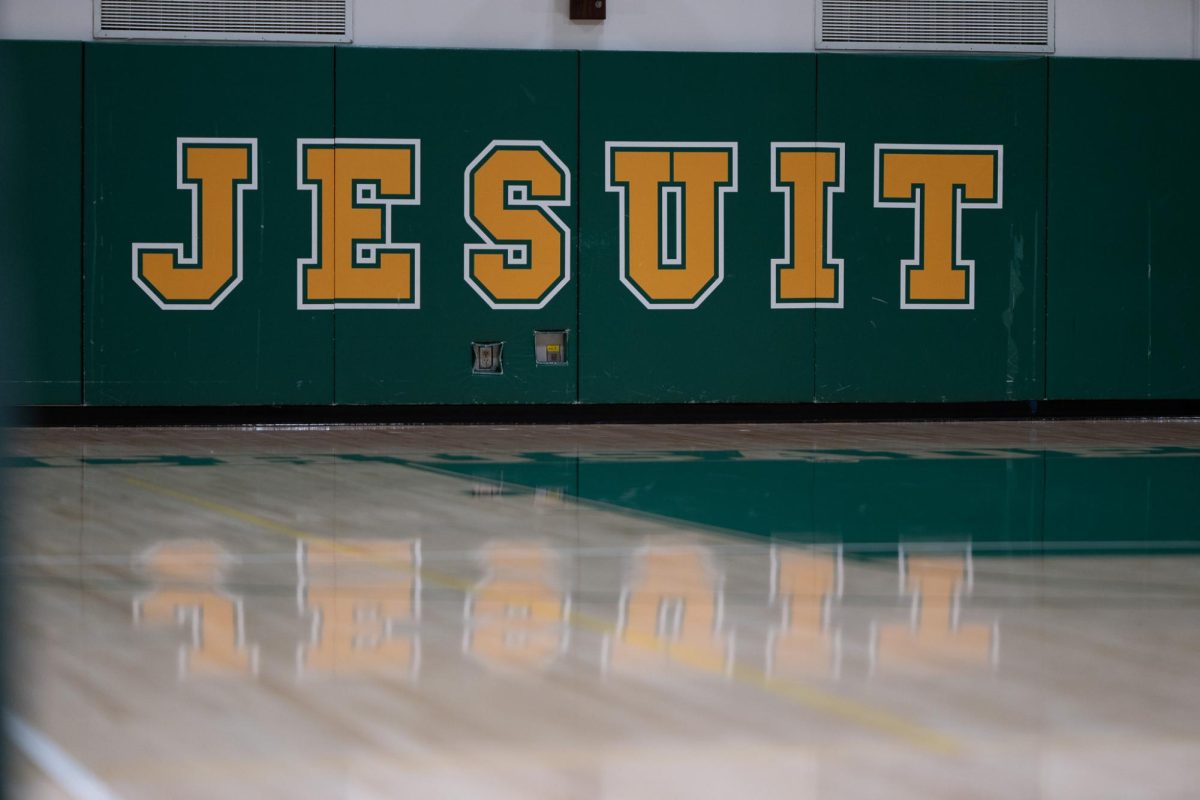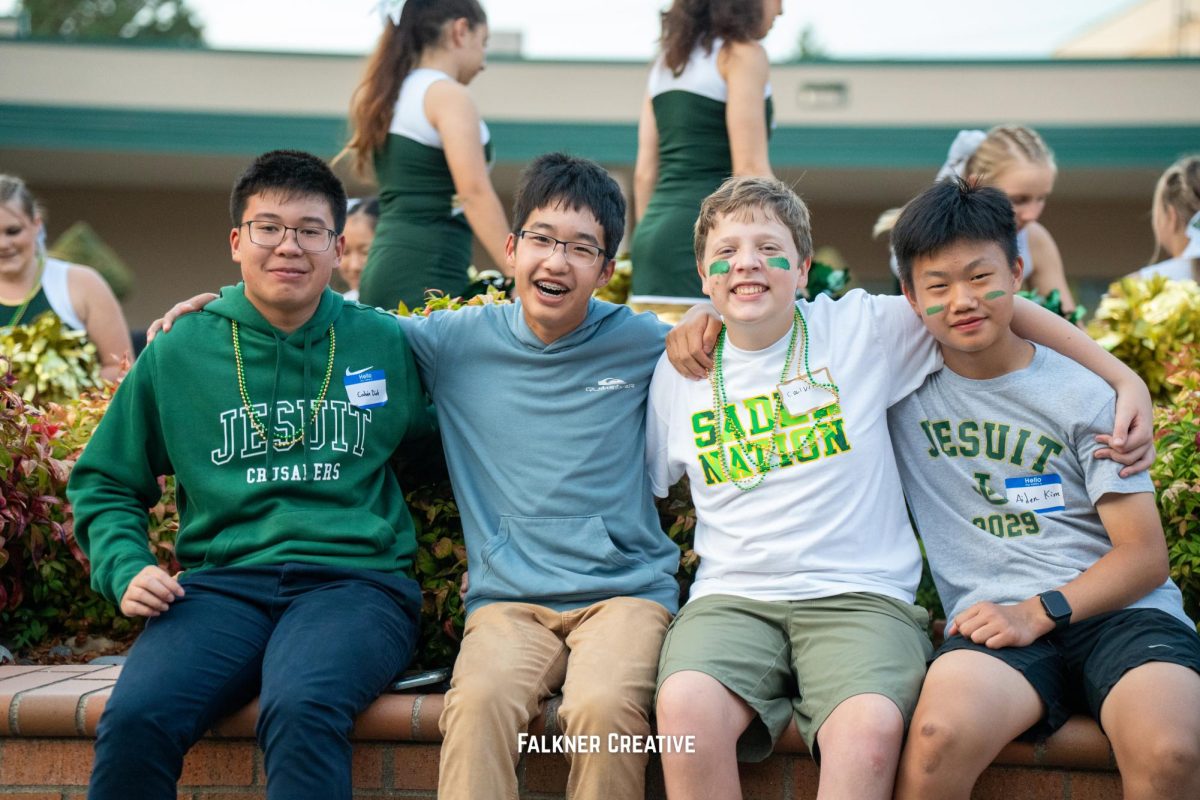The Jesuit Chronicle has published a print newspaper at Jesuit High School every year since 1956. Over those nearly 70 years of publication, we have covered countless stories about the Jesuit community. What started as an black and white publication printed on 8.5×11 paper grew into a full color publication, printing 16-page papers nearly 8 times a year at its peak.
It is therefore only after thoughtful discernment that Jesuit Media has come to the conclusion that this 2024 graduation issue will mark an end to our print edition of The Jesuit Chronicle.
While the first newspaper was published thousands of years ago and print newspapers were once the backbone of our democracy, the transition in the last fifteen years by audiences to engaging with news content through digital media has led to a decline in demand and engagement with print newspapers (FFC).
We’ve seen this trend of lagging engagement with our own print publication.
While we have always taken great pride in the print publication, a growing reality is that it is not engaged with by the majority of the student body. It is often left unread in stacks in classrooms and around school, or discarded after a quick glance through.
The reality is that a high school newspaper has some serious challenges to being the source of news today for the student body and broader community of Jesuit High School.
Perhaps most impactful of these issues is timeliness, a key factor in quality journalism. As a high school newspaper production, it has always been difficult to publish timely reporting due to printing schedules. While readers would often be excited to read an article the day after a sports championship, a student election, or a controversy on campus, that excitement doesn’t sustain when the article appears two, three, or four weeks later. In recent years, students and faculty would point out to us that they had already read an article online that was now appearing in the print edition.
The Jesuit Chronicle at www.jesuitnews.com and our social media platforms eliminate this timeliness issue by allowing news to be broken immediately and articles to be posted and read as soon as they’re complete.
The good news is that, in contrast with the decline in interaction with the paper, we’ve seen a substantial increase in readership on www.jesuitnews.com. In April of 2023, for instance, we registered approximately 3000 page visits and 3600 stories read. This year during the same time period, we registered about 4000 page visits and 4400 stories read in April 2024.
The website also benefits from reaching significantly more people than the print edition could. With approximately 36,000 views a year in comparison to the 3300-4400 copies of the newspaper printed each year, the time to pivot entirely to digital makes sense.
Additionally, with the shifting from a traditional “journalism” class to our newly designed and implemented “Media” classes, we’ve expanded our narrative storytelling to go beyond print journalism, with a significant effort toward video documentaries, interviews, and behind-the-scenes content–popular with today’s audiences. Our videos published daily during the school year to Instagram regularly garner between 2k-10k views. Furthermore, @jesuithsmedia on Instragram drives traffic to our written work on www.jesuitnews.com through highlighted and linked articles.
For all the potential problems of social media, it is clearly the most effective space to capture student engagement. This school year, @jesuithsmedia’s following has increased from 1100 to approximately 1900 at the time this article was written. Tik Tok has increased from 150 to 500.
The strategic use of our budget becomes another opportunity. While the school has been always generous with funding our print publication, each issue of the printed newspaper costs approximately $1200. Compared to the website’s annual cost of $1000, several issues of the newspaper not only cost significantly more, but also reach a smaller audience. Additionally, those redistributed funds can go toward further facilitating broader media efforts.
In a globally connected world, the digital platforms allow our media content to find audiences beyond Jesuit. On the digital platform, media productions can reach relatives, alumni, prospective students, and more in other states and countries.
Media classes at Jesuit are first and foremost educational spaces that are dedicated to teaching essential skills to young journalists about effective communication. Nothing will change about that philosophy moving forward.
Beginning in 1956, the Jesuit newspaper has held a significant space of the school’s history. While the print edition will be going away, Jesuit Media is dedicated to showcasing every story from the Jesuit community as well as possible.
We’re excited about the future, too. We hope you’ve been following our digital evolution, and we hope to perhaps even release a long-form print magazine at least once in the next school year that will feature long form articles and some of our best photography.
Most of all, thank you for continuing to support student journalism and the writers, photographers, producers, editors, marketing team, creatives, and more at Jesuit Media.











